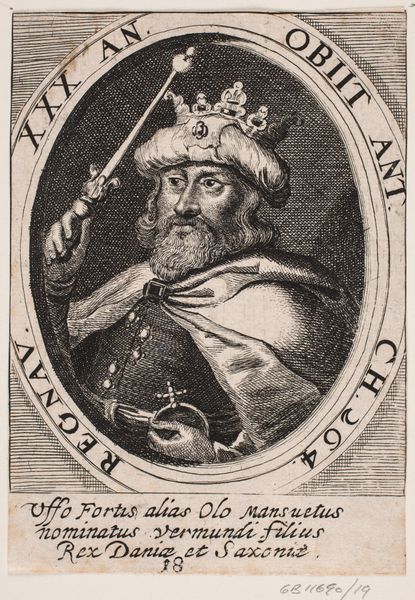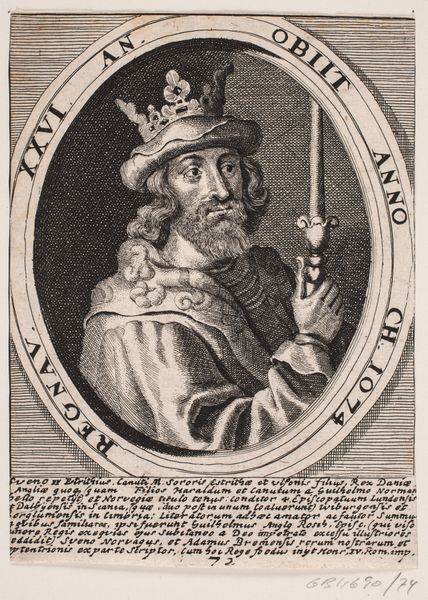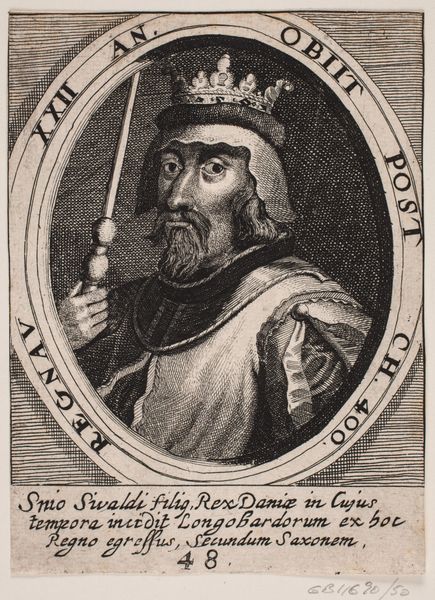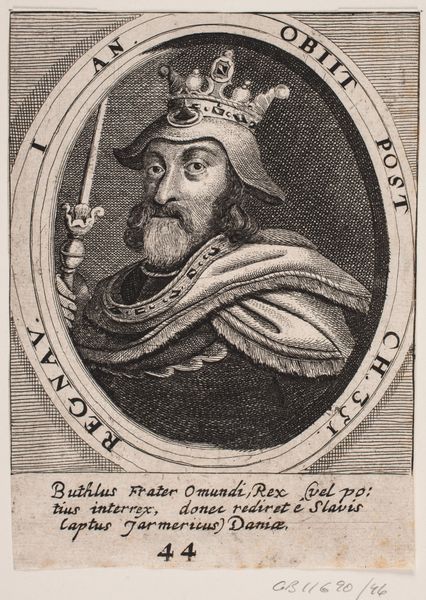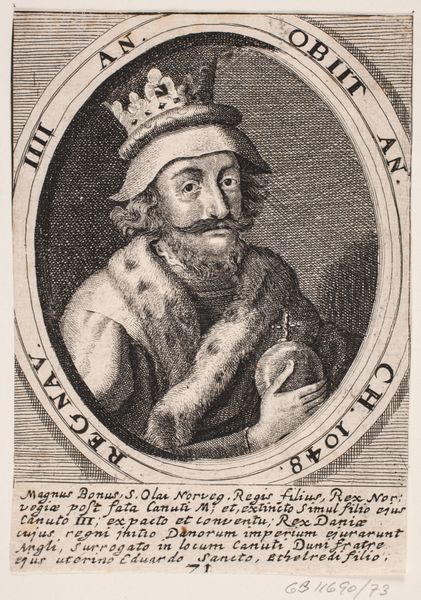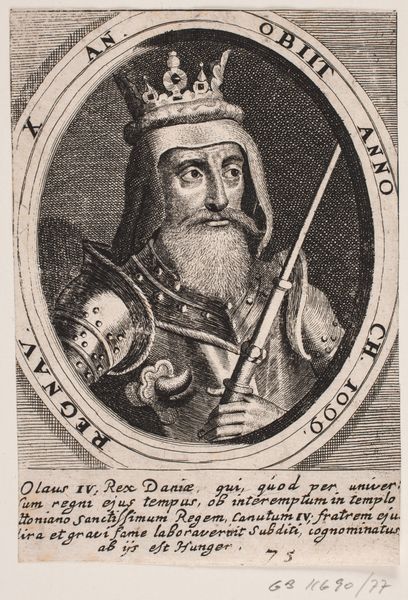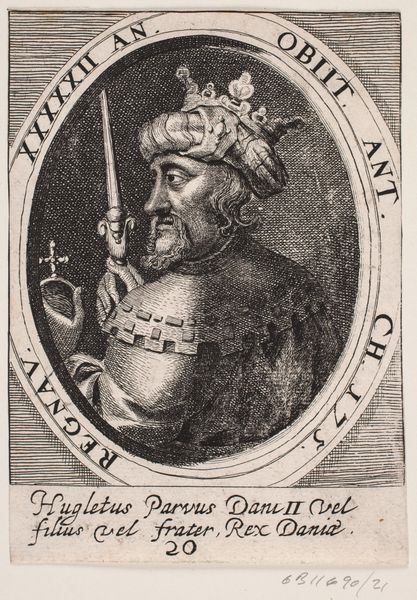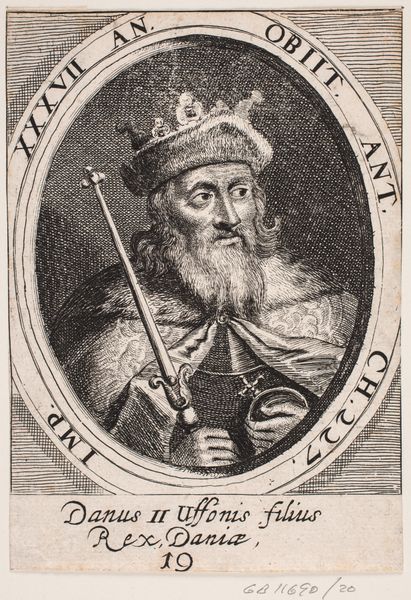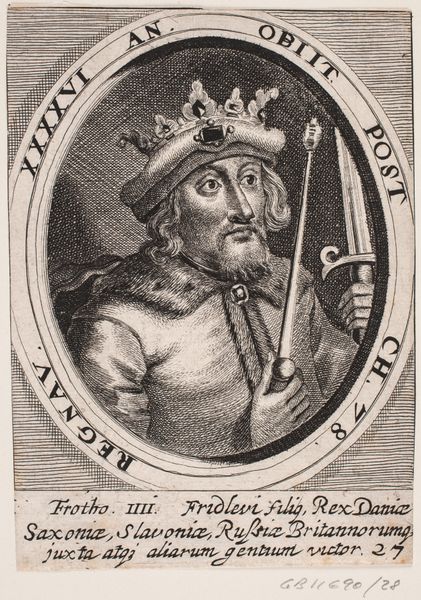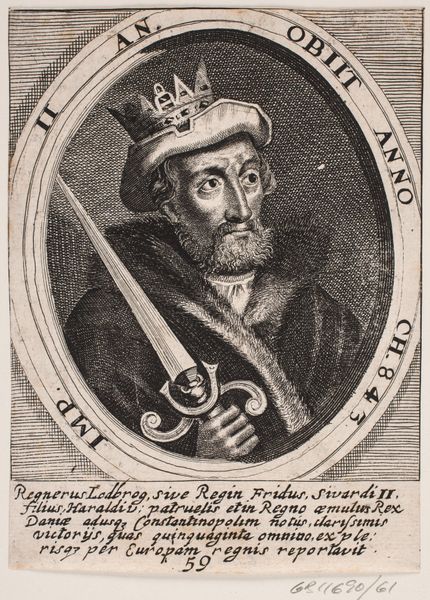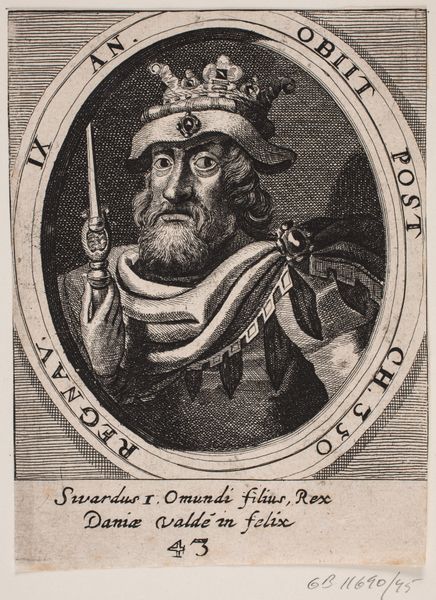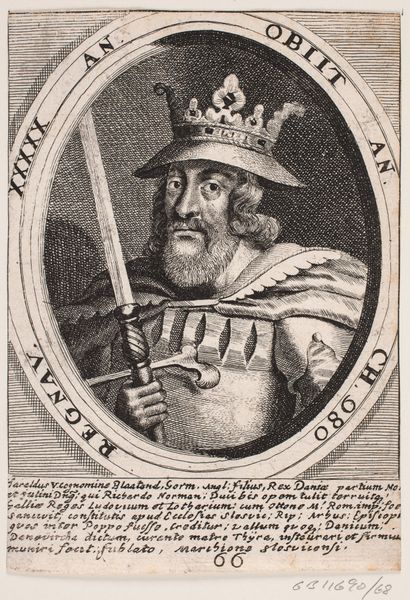
print, paper, engraving
#
portrait
#
baroque
# print
#
old engraving style
#
paper
#
history-painting
#
engraving
Dimensions: 140 mm (height) x 100 mm (width) (bladmaal)
Editor: This is "Kong Frode V," an engraving from 1646, found at the Statens Museum for Kunst. It's an old print, really detailed for the medium. What can you tell me about it? Curator: I see here a carefully constructed artifact born from specific material conditions and intended for circulation. Let's consider the labor involved. An engraver, undoubtedly part of a workshop system, meticulously carved this image into a metal plate. What kind of social structures supported that artisan? Was he independent or commissioned? What's the economic background enabling print production in 1646? Editor: So you're focusing less on the King and more on… how it was made? Curator: Precisely! This wasn't created in a vacuum. The paper, the ink, the very act of reproducing and distributing images – this print connects to broader networks of trade, literacy, and power. Even the "old engraving style" as a tag tells us something. How does it signal status and authority through its deliberate invocation of earlier techniques? Editor: That's really interesting, I never thought about it that way before. It almost feels less about history and more about... consumption. Curator: Exactly! How would this image have been consumed, and by whom? Consider the purpose of portraiture at that time, how did prints democratize it, and simultaneously re-affirm social hierarchies? This image is evidence of labour, production and dissemination; by understanding that process, we understand power structures within 17th-century Danish society. Editor: I suppose I was focused on the king, on history. Curator: But the *making* of the King's image is the real history. The value lies not in some inherent quality of the depicted King, but the labor of making and its subsequent circulation. This reminds me that art creation is never separated from social context. Editor: Okay, so thinking about art in terms of its materials, labor and audience gives a whole new perspective.
Comments
No comments
Be the first to comment and join the conversation on the ultimate creative platform.
